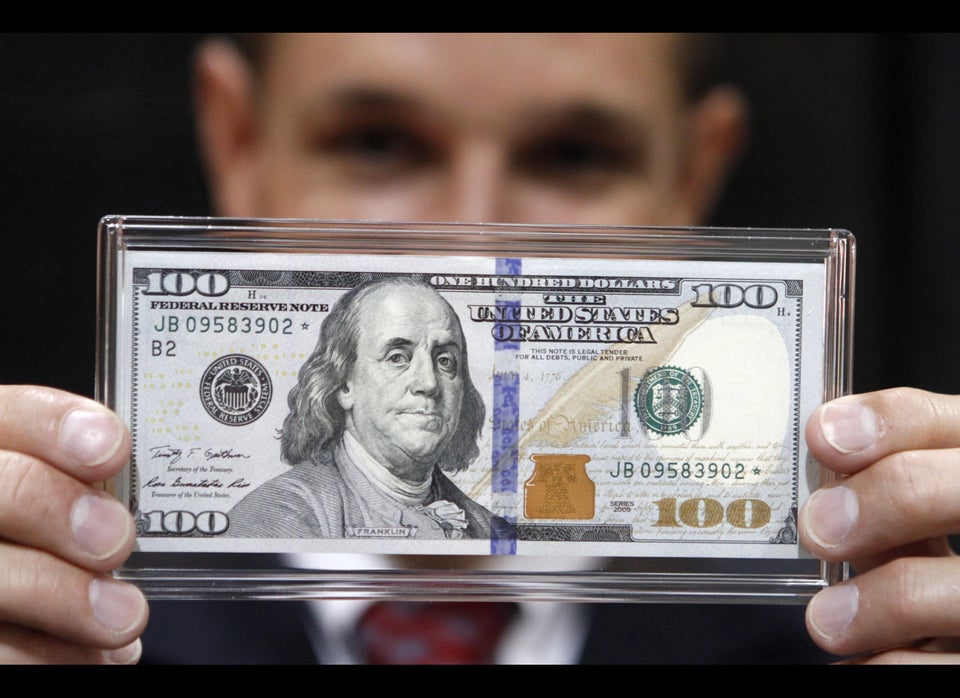* U.S. central bank adopting series of policy guidelines
* Next on agenda: economic thresholds to guide rate hikes
* Bernanke expected to step down in January 2014
By Jonathan Spicer
NEW YORK, Nov 11 (Reuters) - President Barack Obama's next
choice to head the U.S. Federal Reserve could have his or her
hands tied if Ben Bernanke and company continue to re-write the
policymaking rule book at their current clip.
Under Chairman Bernanke, who is expected to step down when
his current term expires in January 2014, the U.S. central bank
has embraced the goal of making the historically shrouded
business of setting monetary policy far more transparent.
It has adopted a string of new rules and guidelines to
clarify its policy intentions, including an inflation target and
a conditional vow to hold interest rates near zero until at
least mid-2015.
The next step is being hotly debated now.
Fed policymakers are striving to agree on a set of economic
variables, or thresholds -- probably particular levels of
unemployment and inflation -- that would signal when the time to
raise interest rates was finally drawing near.
The trick is making a credible commitment that convinces
investors to keep longer-term borrowing costs low, thus
stimulating the economy, while at the same time ensuring the Fed
can react swiftly to changing economic realities.
The concern is that these rules and guidelines will crimp
the central bank's flexibility in years to come as it deals with
the fits and starts of a protracted U.S. economic recovery.
"The more they do it over the next year, the more the next
chair will be constrained," said Vincent Reinhart, chief U.S.
economist at Morgan Stanley and a former Fed economist. The
"constructive ambiguity" the central bank has famously used over
the years to safeguard its policy-setting discretion is slowly
disappearing, he said.
PRESERVING POLICY CREDIBILITY
In battling the worst recession in decades, central banks
around the world have deployed untested tools, such as
large-scale bond purchases. They have also often made
commitments about how, and for how long, they plan to use the
tools.
Their decisions will matter for years to come.
After eight grueling years battling a severe financial
crisis, the deepest recession since the Great Depression and a
disappointing recovery, Fed watchers say Bernanke will likely
want to step down when his second term as Fed chief expires,
even if Obama wants him to stay.
But the economy is unlikely to have fully recovered by then,
leaving any rate-hike cycle to his successor. Fed Vice Chair
Janet Yellen and Lawrence Summers, a former White House economic
adviser, are both considered possible top candidates for the
job.
Whomever Obama nominates will be handed a rule book from the
Bernanke era that will be difficult, and maybe unwise, to erase.
Though the guidelines adopted under Bernanke are not
iron-clad law, "the credibility of policy actions would be at
stake if they were easily overturned," said Peter Hooper, chief
U.S. economist at Deutsche Bank Securities.
AGE OF IMPROV
If Fed officials can reach agreement, economic thresholds
would replace their stated expectation that interest rates would
remain near zero through at least mid-2015.
It would be the latest refinement to the Fed's
communications toolkit. In the last 16 months alone, it moved to
tie low interest rates to calendar dates, adopted a formal
inflation target of 2 percent, and published the policy
expectations of each of its 19 policymakers. It built on that
list in September when it said it expected to buy bonds until
the labor market outlook improved "substantially."
Within the Fed's policy-making committee, however, consensus
on which unemployment or inflation levels to use has proven
elusive. Four top Fed officials have gone public with their own
proposals, whether simply to provide a window into their tough
internal debate or to sway their colleagues.
"It would be nice if we could communicate more clearly what
those parameters are," William Dudley, the influential president
of the Federal Reserve Bank of New York, said last month.
"The problem of course is that it's very hard to summarize
the economy, and how you're going to feel about the economy,
through just one or two parameters," said Dudley, who has not
pitched a plan.
Yellen -- who as chair would likely smooth the transition
from Bernanke -- could shed more light on the issue on Tuesday
when she gives a speech on central bank communications.
To be sure, Bernanke's Fed has been careful to leave itself
some breathing space. The current round of bond purchases is
"open-ended," meaning there is no dollar value or timeline
constraining it.
Still, the drum beat of rule changes continues.
The Fed is also considering adopting a "consensus forecast"
to give investors a better sense of how policy is likely to
evolve. That would build on a January decision to publish for
the first time individual policymakers' rates forecasts.
As Bernanke's term draws to a close, the jury is still out
on the effectiveness of the new transparency steps.
"It is the improvisation stage," Reinhart said, "and it does
feel unsatisfying."
(Reporting by Jonathan Spicer; Editing by Tim Ahmann and Leslie
Adler)

